Puglia re-boot: a guide to Italy's southern tip
The region’s timeless vistas and fascinating culture have long lured admirers. One of them, Italy resident and committed Puglia-phile Collette Dinnigan, opens her black book.

Puglia is hot right now; and we’re not speaking in meteorological terms. Remarkably, in the midst of the COVID-19 pandemic and the resulting economic fallout it has wrought across Europe, this southernmost region – the heel of the boot of Italy – seems to be having a bit of a fabulousness moment. Granted, it’s not as if Puglia hasn’t been on the radar for some time: from the wilds of Gargano in the north, down to the baroque splendour of Lecce and the opalescent Ionian waters of the Salento (as the region at the very tip of the Puglian stiletto is known), the wind-buffeted landscapes and sui generis culture – part Italian, part Greek, still untamed around its edges by the manicuring ministrations of luxury – has long had a select group of globetrotting admirers.
But this summer, against the odds (and as many other parts of Europe suffer from the absence of visitors), Puglia is flourishing. A clutch of considered new hotels have made, or are shortly to make, their debuts; some are housed in grand city palazzi, others sprawl flush on the edge of the lapping Adriatic. Artisans – ceramicists, weavers, the families that have produced Puglia’s famous luminarie light designs for generations – are finally gaining their due recognition, well beyond the region’s borders. Witness Maria Grazia Chiuri, Christian Dior’s Italian (half-Puglian, actually) creative director, who in July staged the Cruise 2021 show in Lecce. Chiuri’s designs in fact took inspiration from many pugliese artisanal and cultural traditions, and the catwalk action was complemented by singers and musicians performing the tarantella, traditional folk dancing and singing whose roots here extend back centuries.
It’s this ancient culture, in its timeless landscape, that drew Collette Dinnigan. For three years, Dinnigan – who moved to Rome in 2016 with her family – has been hard at work restoring Casa Olivetta, a 500-year-old compound situated between Cisternino and Ostuni, in the heart of Puglia’s ancient Valle d’Itria. For months of each of those years, she’s scoured the region, sourcing tableware and linens, brocante and local delicacies for the kitchen, and much more. With her stylist’s eye and an innate appreciation of design that privileges heritage in a modern context, she has amassed a fairly world-class address book. Read on for her take on Puglia’s best.
STAY: VILLAS
“There are so many options, in so many styles. Our place, Casa Olivetta, is a 500-year-old farmhouse – simple lines but lovely proportions. It has four bedrooms and extensive olive groves around it; there are lots of places to dine outdoors, with fireplaces and a pizza oven. Inside, it’s a simple sort of luxurious – the floors are authentic local cotto, there are handmade cast iron beds and antiques I’ve found at local Sunday markets – these happen all over Puglia and aren’t to be missed.
“The other houses I always recommend to friends are both very different from Casa Olivetta and from each other; I’d even say stay at all three, to get a sense not just of the region but also of the diversity of local style.
“One is Masseria Lamacoppa, which is owned by Katherine Mondadori. In contrast to ours, it’s a proper masseria. The house itself isn’t massive, though it is exquisitely designed and the grounds are gorgeous and go on and on, covered in cork and olive trees, with these sweet donkeys sort of roaming free. The pool’s also enormous. I’d say it’s an amazing villa, not necessarily to accommodate a big group [it sleeps up to 12] but absolutely to host a lovely event – there’s a fantastic kitchen, and plenty of room to set up a marquee.
“The second house, CASA M101, is completely the opposite: ultra-contemporary, one storey, three bedrooms on a hill overlooking Martina Franca. Everything is sleek and very state of the art, with some iconic mid-century designs. And lots of floor-to-ceiling glass, to let in all the light.”

STAY: HOTELS
“Technically the Hotel La Peschiera has five stars, though I admit I’d call it more of an elevated four-star. But we love it – I just feel totally like I’m on holiday when I’m there. Not least because you’re right on the water, literally; you can just jump right into the sea from your room. We had a long lunch and Hunter was having a nice swim in front of us and there were only a few metres between us. To me it’s the closest to being in the Maldives I’ve found.

“The perfect place for families with young children is Borgo Egnazia, in Savelletri di Fasano. It’s just completely set up for kids, with their own pizzeria and little borgo and everything. But it also has a very luxurious spa, with world-class treatments – something that is almost non-existent down here. It’s very well serviced and very secure – five star all the way.

“There aren’t many great places down in Salento to stay so if you want to explore the area, Palazzo Daniele is this 19th century, slightly dilapidated palace that was renovated recently and given a very contemporary edge. It’s a monumental place, right in the centre of Gagliano del Capo, which is a tiny town. Faded grandeur with a modern twist. A new fine dining restaurant called Farmacia dei Saniis worth visiting in the nearby town of Ruffano.
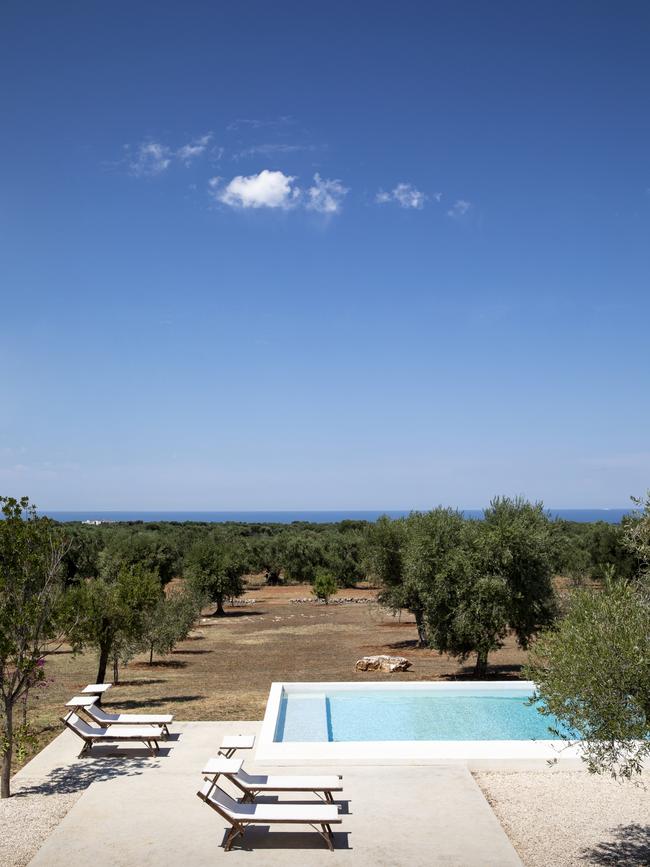
“One of our absolute favourites is Masseria Moroseta. It’s well designed with a contemporary Pugliese feel and has a great pool set amongst olive trees with sea views. It’s reasonably priced and not large, so can be very difficult to get into. Book early! They cook almost entirely from the garden – the chef, Giorgia, is a huge talent [see EAT].
“Just outside of Lecce is Masseria Trapanà, owned by our friend Rob Potter-Sanders. It’s a special place, only nine bedrooms. “And there’s also Masseria Cervarolo, five minutes from Ostuni. The main spaces are all in an actual masseria but the rooms, and there are only about 12 or 13, are all in these interconnected trulli, the traditional conical houses here. It’s not as sleek and chic as Moroseta or Trapana, but there’s so much love in this place. It’s really a very authentic Puglian experience.
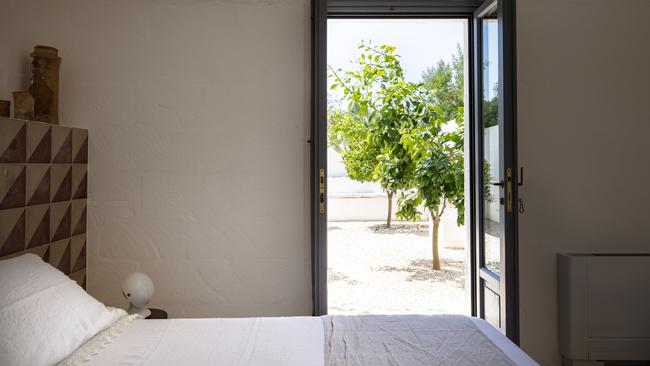
“Finally, if you’re driving to Puglia from points north, the best place to stay a night – or even stop for a gorgeous lunch – is Palazzo Margherita, Francis Ford Coppola’s hotel in the centre of Bernalda, just across the border in Basilicata. The food is fantastic and the welcome is really spectacular, just very naturally a magnificent palazzo experience. And the design is by Jacques Grange so the rooms are exquisite.”
EAT
“Lots of the hotels have restaurants or beach clubs that are worth the visit, and the drive, in their own right. At Saleblu at Hotel La Peschiera you eat fantastically if you stick to the simple dishes; the grilled scampi is a must. At Masseria Moroseta they open the restaurant up to non-guests a couple of times a week; it’s worth booking well in advance for what I think is the best organic, farm-to-table cooking down here. The food at Borgo Egnazia’s beach club is a knockout – very local, but elevated. After days or weeks of eating cucina povera you sometimes want something a bit more refined, and this is the place. It’s got scale, it’s grown-up but still relaxed. And they make their own gelato.
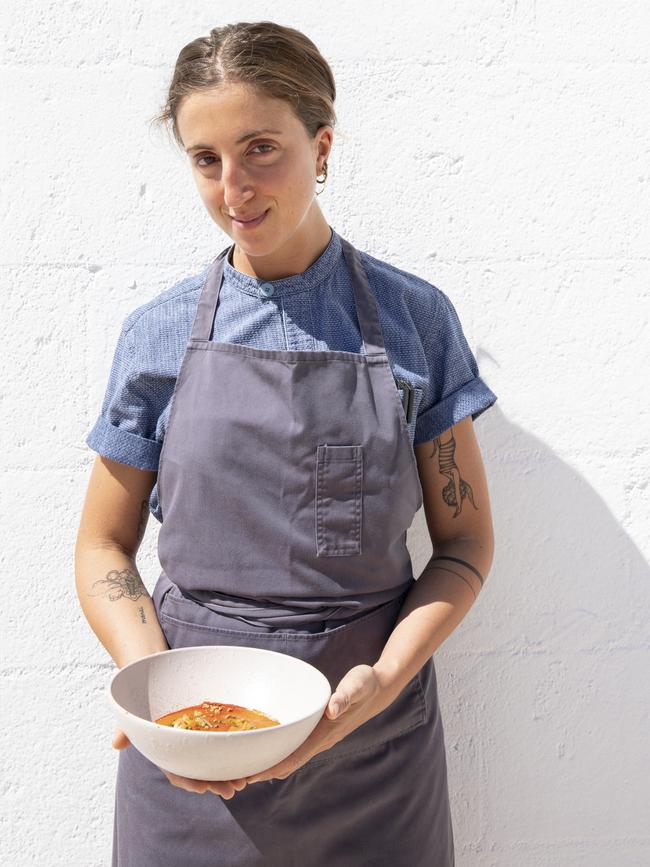
There’s a new hotel in a converted palazzo in the middle of Ostuni called Paragon 700; while the hotel itself is a bit extravagant and formal for my personal taste, we had an incredible lunch there. It’s a proper working chef’s kitchen and all the menus are degustation. And they have a proper bar, with a vast array of spirits – which, like Borgo Egnazia’s spa, is something you don’t see much of down here. It’s has a worldliness to it.

“Taverna del Porto is a great little seafood restaurant in Tricase Porto. It’s a real Mediterranean immersion – the dad, Mario, was a fisherman and the sons, Alessandro and Pierluigi, have taken it over, and the nonna still makes all the desserts. It’s totally family run. The oysters are some of the freshest I’ve ever had. Tricase Porto is where you have all the beautiful grottoes so the area makes for a great boat day, and then this is where you stop for a long lunch.

Alba Chiara is a tiny little beach place in Savelletri that specialises in ricci – sea urchins. There’s also a lot of ceviche and a lot of raw prawns. They have a line of waterside tables but you can’t book them – only the ones in the back – so it’s worth going early to sit by the sea. It’s the opposite of Taverna del Porto – quite a bit more rustic and about half the price, and very typical of Savelletri. Gallipoli, where you can eat at the seafood markets, and La Lampara or their more upmarket restaurant in the old city are also worth a trip.
SHOP
“I’ve become obsessed with ceramics here and CNF in Grottaglie is the place. It’s owned by Franco Fasano – in Grottaglie everyone’s last name is Fasano, and it was always one big family doing ceramics and now somehow they’re all sort of slightly embattled with each other. But Franco is deeply passionate, and works with you to create totally customised ceramics. You choose your shape, your colourways, your designs, and then it’s all made by hand. The prices are incredibly reasonable.
It’s always worth a trip – just don’t go between 1pm and 4 pm because in Grottaglie they take siesta very seriously. Everything closes. Have lunch at La Capasa Osteria - fantastic food!
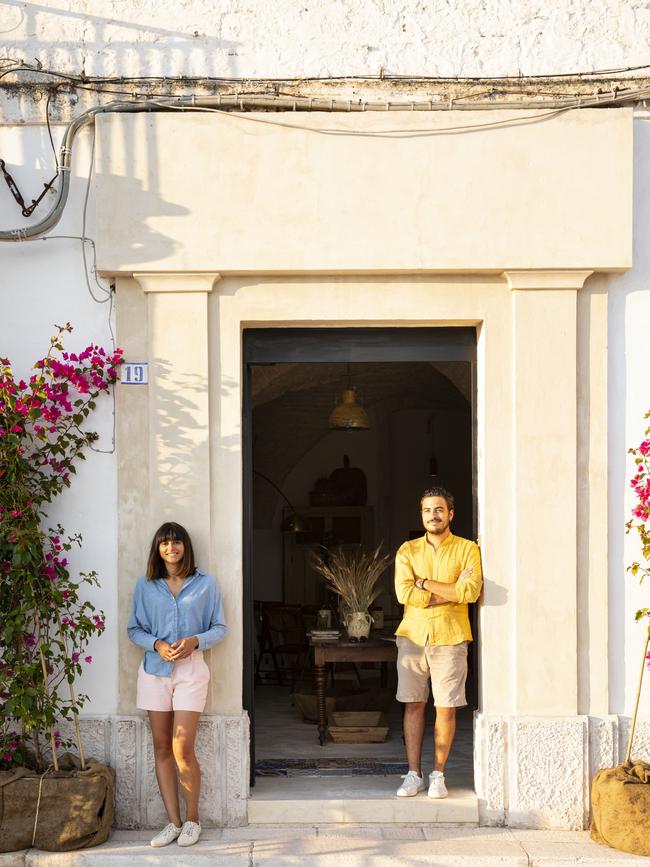
“In Cisternino there’s a gorgeous shop called Le Icone. It’s run by a dynamic young couple who curate and sell the old, but with a modern twist, and with a very, very good edit. I’m all for scouring markets and digging in piles of stuff to get amazing vintage ceramics and things at about a third of the price. Here, they’ve done it for you. If you don’t want to schlepp or dig, you can find it all here beautifully merchandised and edited.
I have all the bed linens at Casa Olivetta made by Tessitura Calabrese. It’s fabulous if you want something super custom that no one else will have; they have the weaving mill out the back and do everything there.

“The Saturday produce market in Ostuni is an absolute must for the sheer colour and bounty on display. Glossy aubergines and every colour and shape of pepper, fruits and legumes, huge stacks of micro-local cheeses and salumi, charcuterie. And on Sundays there are antiques and vintage markets in some of the major towns – Martina Franca’s is the third Sunday, and one of the biggest, with furniture and art. Ostuni’s happens on the second Sunday and has more ceramics and bric-a-brac.
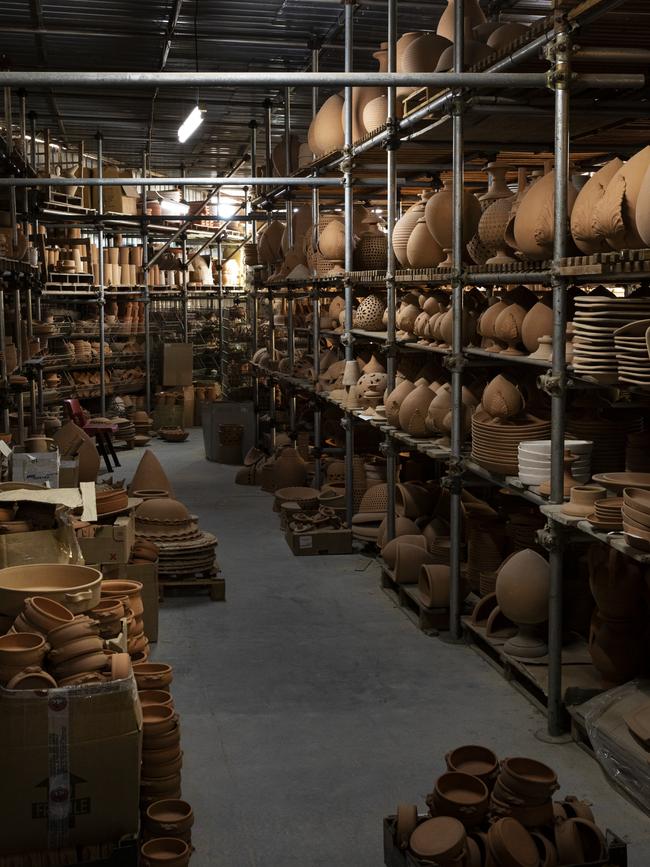
“Don’t miss Gallipoli, which has a charming Centro Stroico with its own beach, and a great little store, TulsiShop, where I always manage to find a stylish piece of beachwear. Also Blanc is great for ceramics and a nice cafe. The small streets are lined with many stores selling seashells and sea sponges.”

To join the conversation, please log in. Don't have an account? Register
Join the conversation, you are commenting as Logout